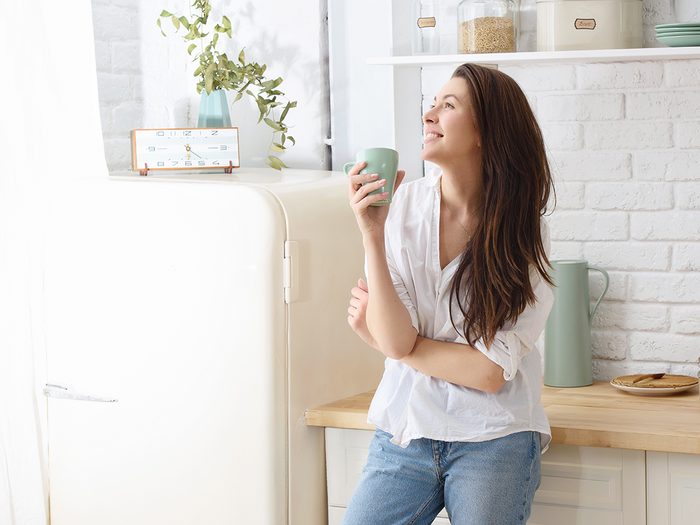
The Healthy Home Checklist
We spend an astonishing 90 per cent of our lives indoors. And whether you live in an old house or a brand new condo, they’re filled with unseen pathogens, chemicals, stale air and other dangers. We talked to Canada’s leading experts—scientists, academics and wellness gurus—to find out what you can do to create a healthy home for you and your family. Here are practical and easy changes to make in each room, from the safest materials for new furniture to how to air out your bedsheets, to a simple trick to avoid exposure to the bacteria lurking in your shower head.

In the Bedroom
Invest in a decent mattress
Assuming you’re sleeping the recommended hours per night (that’s seven to nine for adults), you’re spending one-third of your life in your bedroom. And insufficient sleep—either short duration or poor quality—is associated with obesity, type 2 diabetes, cardiovascular disease, injuries, depression, irritability and reduced well-being.
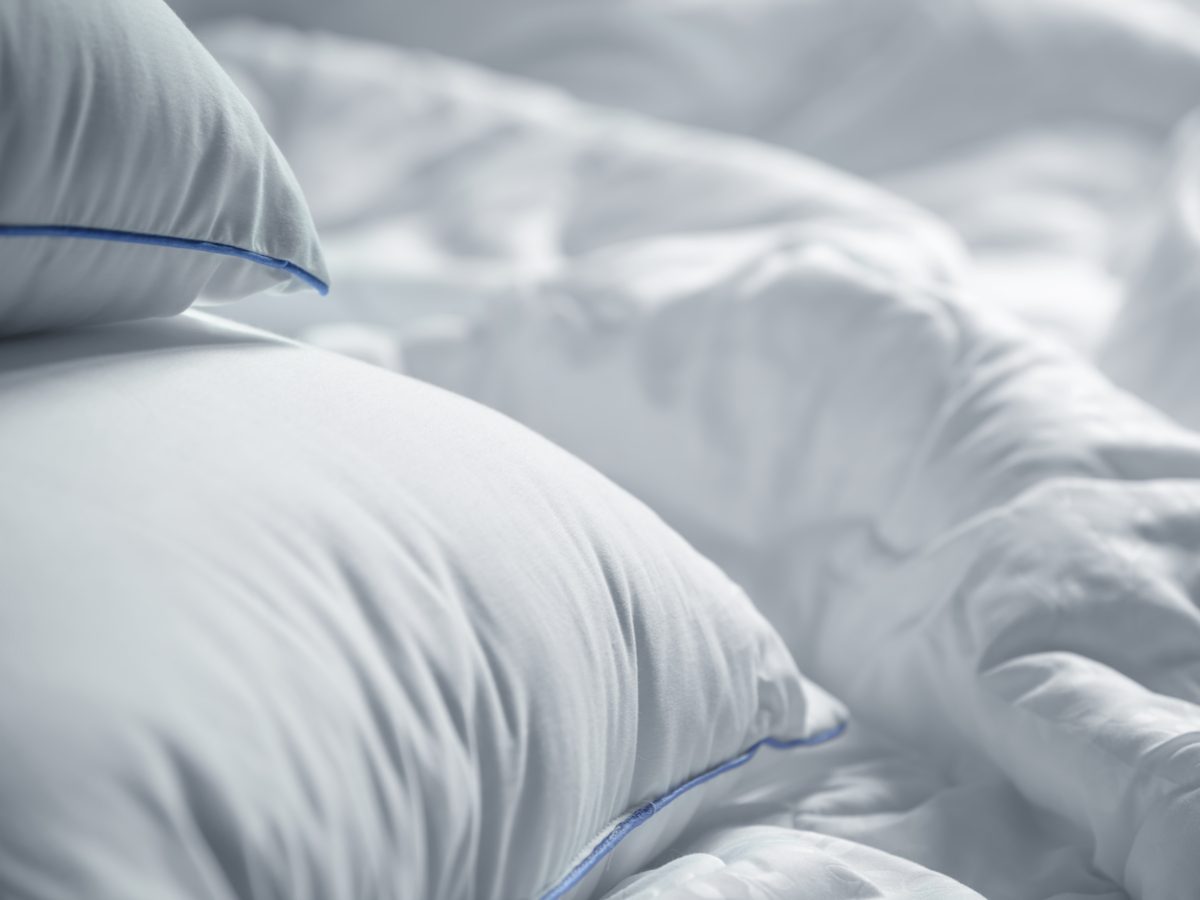
Be mite smart
Let the sheets and duvet air out for an hour before you make the bed to help control moisture-loving mites. To really sock it to them, wash all of your bedding once a week in hot water, and vacuum your mattress.
Find out why you need to clean your washing machine filter (and where to find it).
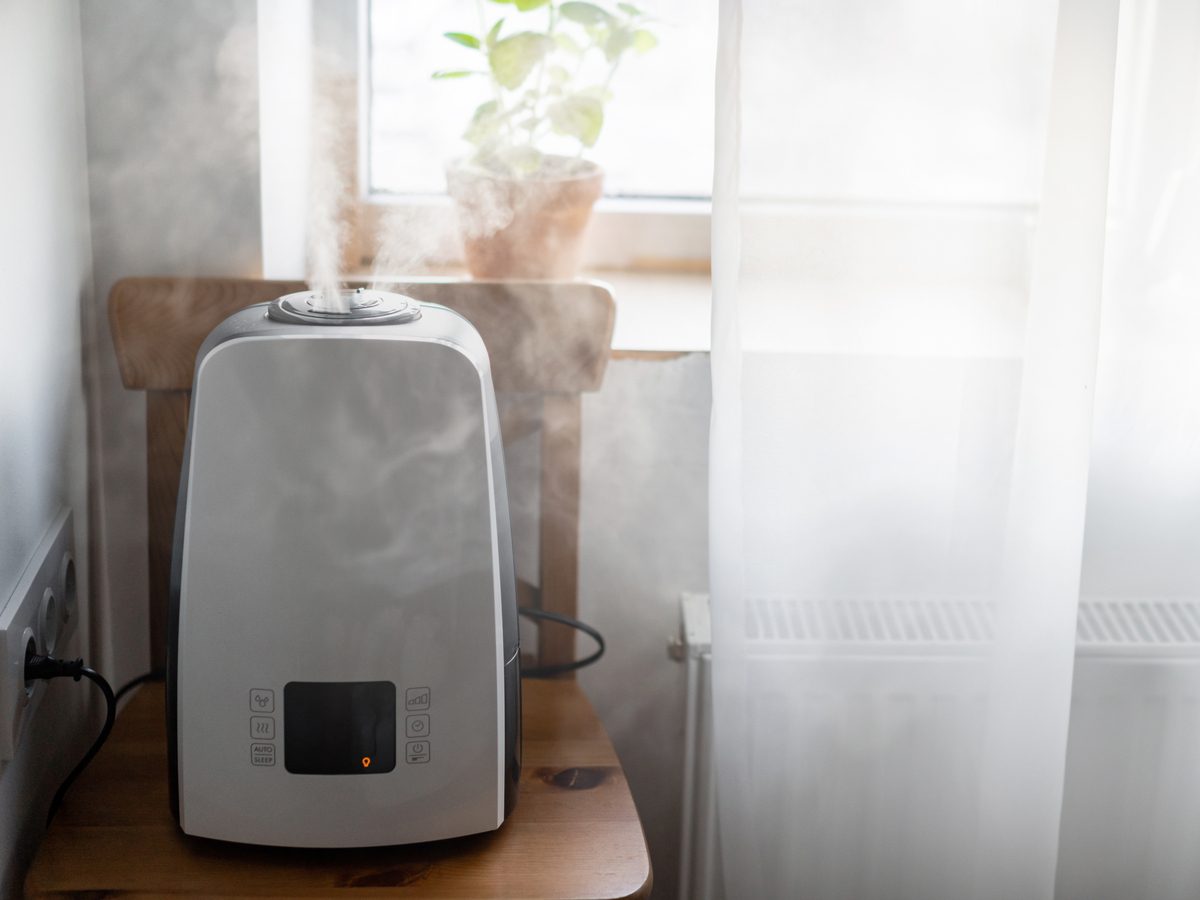
Build up humidity
In a high-usage area of your home like your bedroom, the air quality matters—a combination of humidifiers, fans and fresh air will keep your bedroom at an ideal 45 per cent humidity for a good night’s sleep.
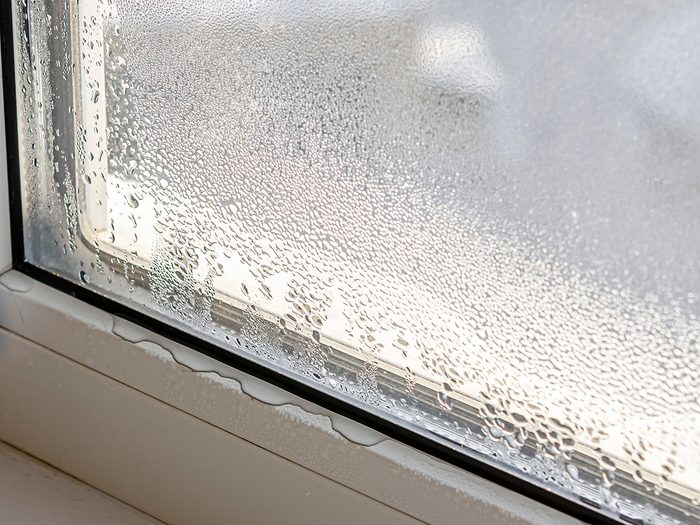
Don’t let it get too wet
“Watch for warning signs of moisture problems, like condensation on your windows during cold weather,” says Dr. Jeffrey Brook, an environmental health and urban air quality expert at the University of Toronto’s Dalla Lana School of Public Health. “It’ll lead to mould growth, not to mention ruined window frames.”
Here are 13 secrets real estate agents want you to know.
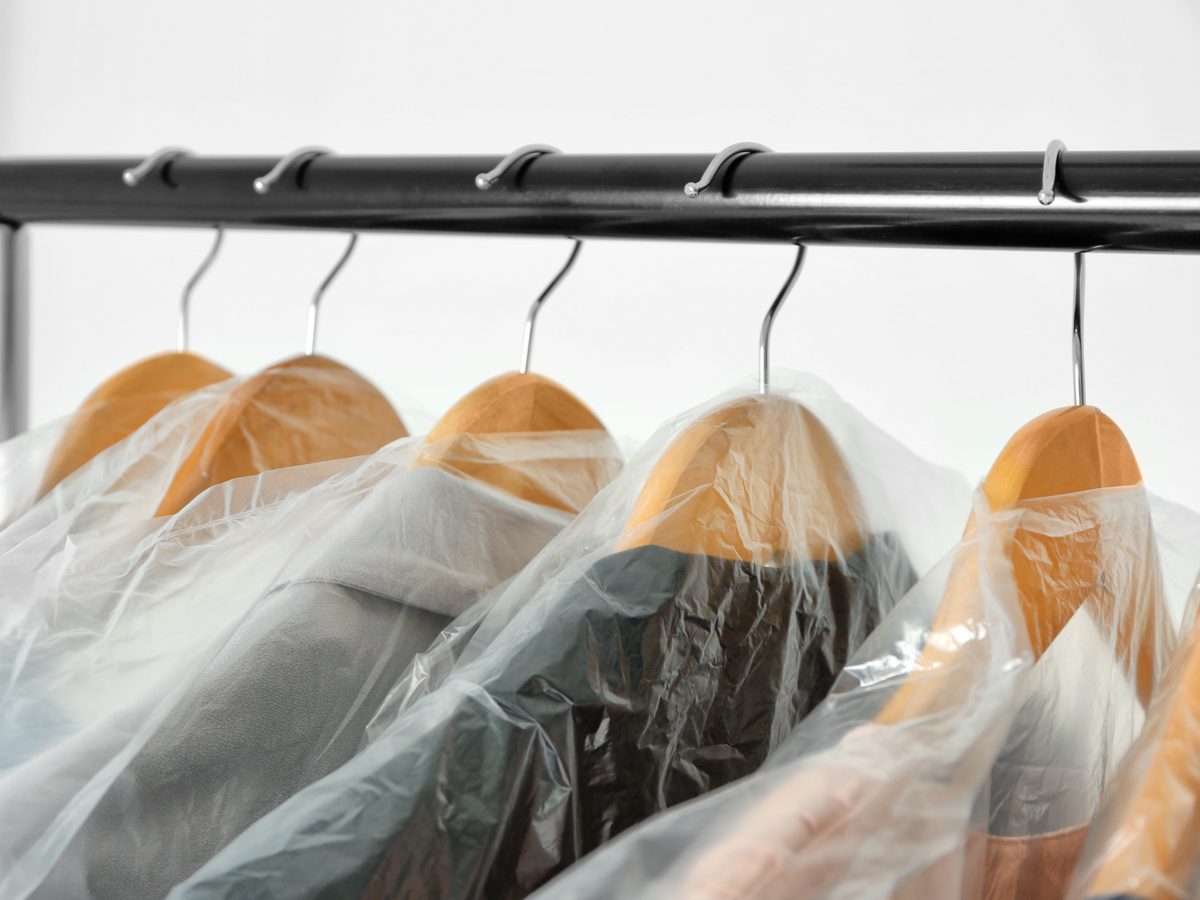
Reduce your toxin exposure
Dispose of dry cleaning bags before you enter your home so that any residual perchloroethylene (called “perc” by professional dry cleaners), a common dry cleaning solvent and suspected carcinogen, can off-gas safely. In fact, you should steer clear of anything that smells plasticky; the likely culprit is phthalates, a group of toxic chemicals used to soften plastics and increase their flexibility, and which are found in cosmetics, textiles, kids’ toys and a zillion other common household products.

Optimize your sleep
Keep your bedroom cool (15.5º C to 19.5º C), quiet (consider using earplugs or a white-noise machine) and dark (blackout curtains if necessary).
Here are more expert-approved sleep aids that could help promote a deep, restful sleep.

Dim harsh lights
Use red lights for night lights and avoid looking at bright screens two to three hours before bed. Electronics with screens and energy-efficient LED light bulbs increase our exposure to blue wavelengths, which causes the body to produce less melatonin, the hormone that regulates sleep and wake cycles.
Find out why you should always read before bed.
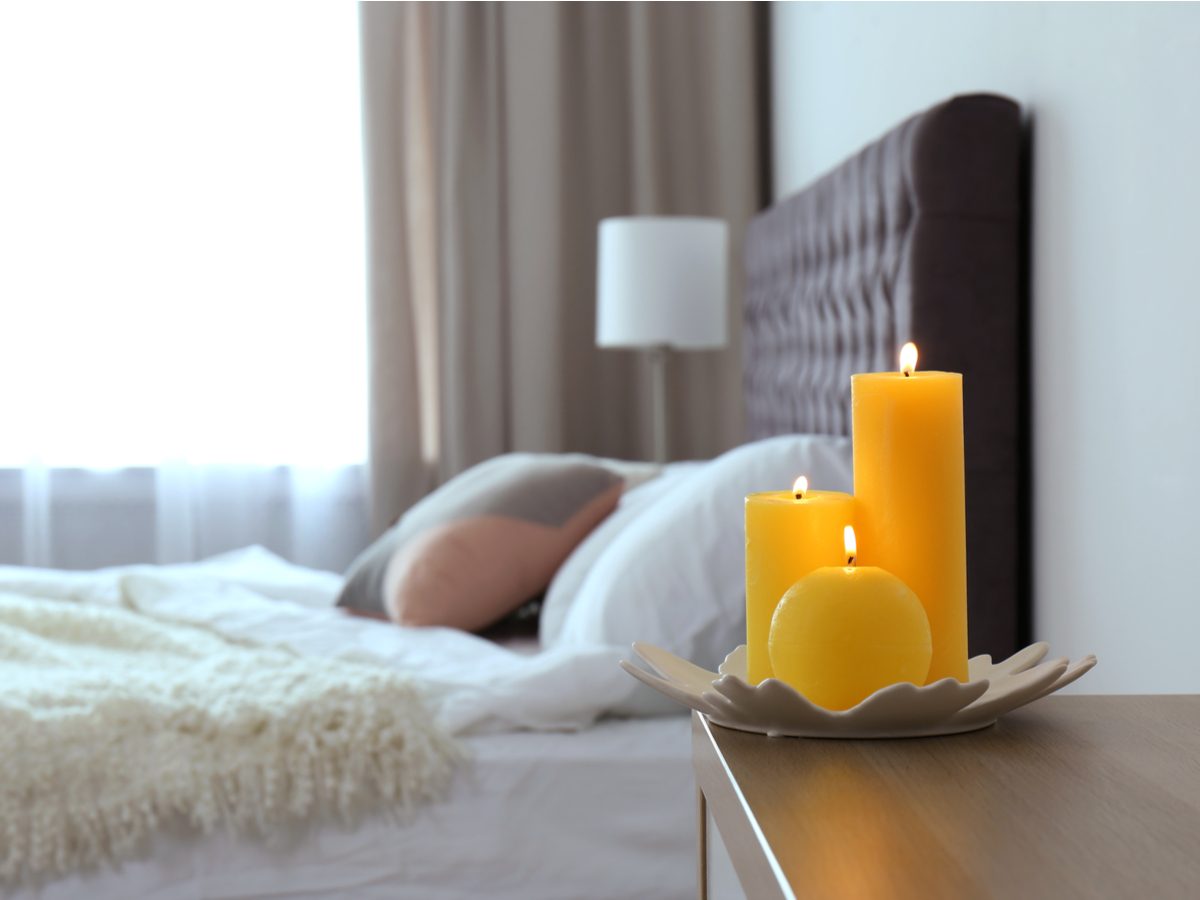
Avoid air fresheners
They mask mildew odours with fragrance-bearing phthalates and contain harmful volatile organic compounds (VOCs) that contribute to terrible indoor air quality. You want to be able to smell those musty odours so you can address them right away. Similarly, cut back on candles and incense. They create a cozy atmosphere, sure, but they also release fine particulates into the air. If you’re set on using candles, use a snuffer instead of blowing them out.
Here’s why you should always trim the wick before lighting a candle.
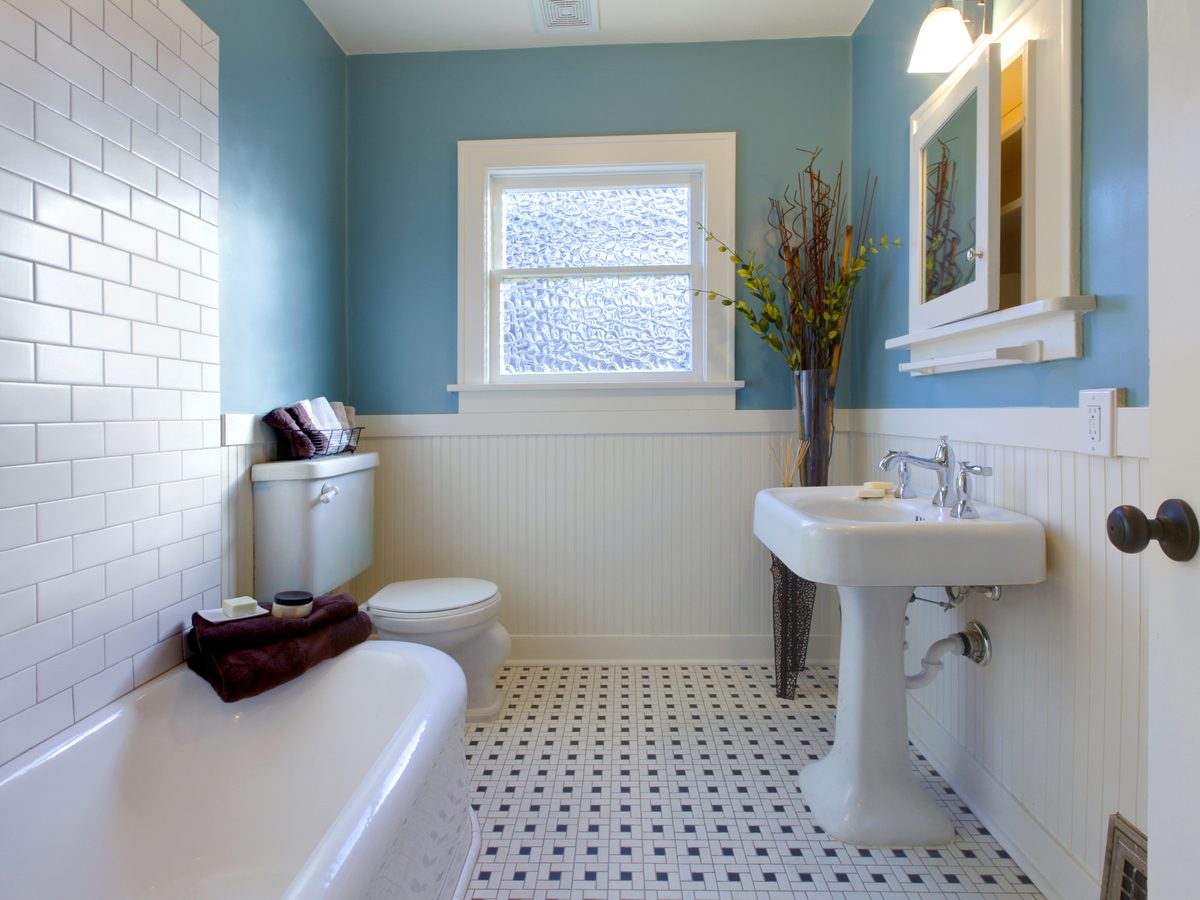
In the Bathroom
Watch out for mould
Maintain caulking to inhibit growth around your shower, tub and sink—it should last five years, but any cracking, shrinking or discolouration means it’s time to replace. That’s easy to do, and worth a day’s work; exposure to mouldy environments can cause nasal stuffiness, throat irritation, coughing or wheezing, eye irritation or, in some cases, skin issues. If you have compromised immunity, this is especially important.
Find out how to clean your bathroom thoroughly—using ordinary ingredients you’ve already got in your cupboards.
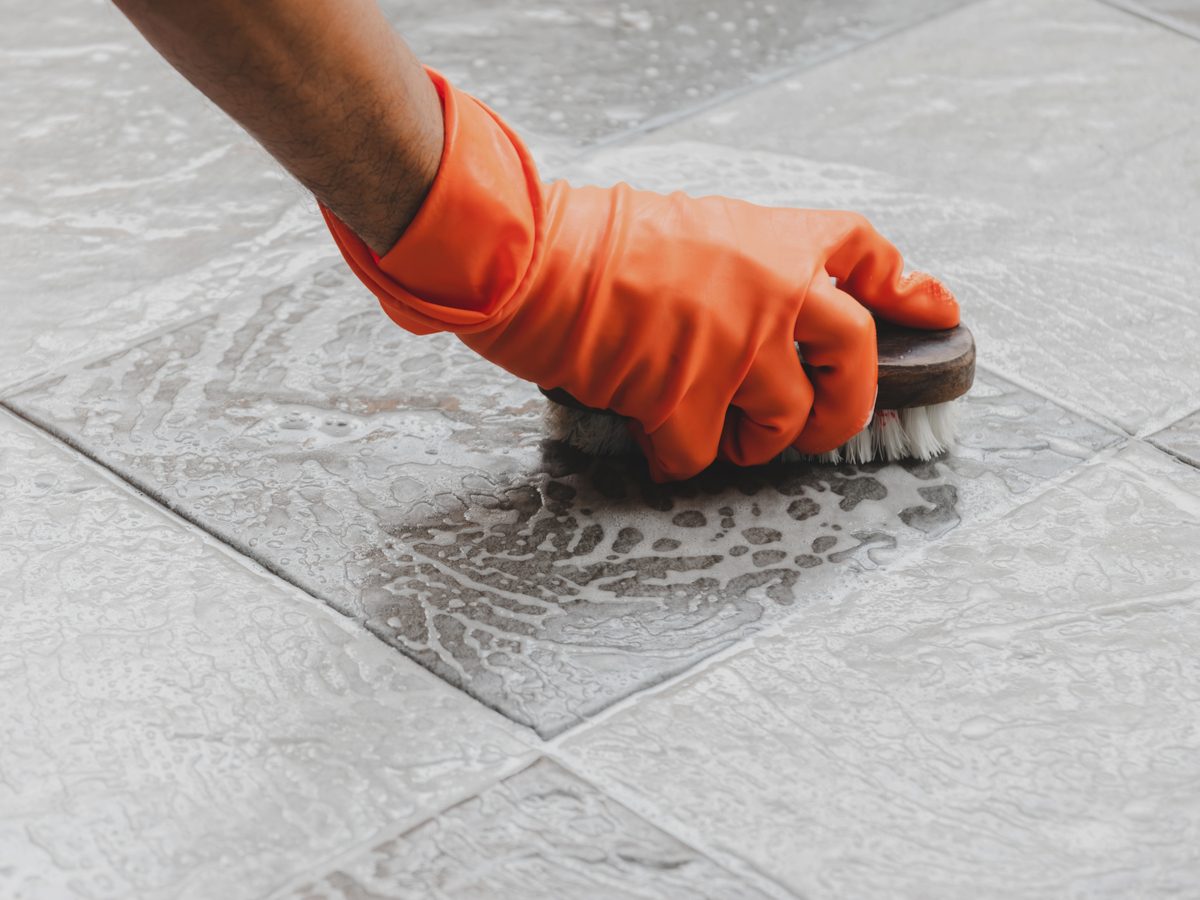
Detox your cleaning routine
To clean grout around shower or floor tiles, use a homemade baking soda and hydrogen peroxide paste—it’s just as effective as retail cleaners but cheaper, and an easy way to reduce the number of airborne chemicals you’re inhaling.
Discover more green cleaning tips for the bathroom.
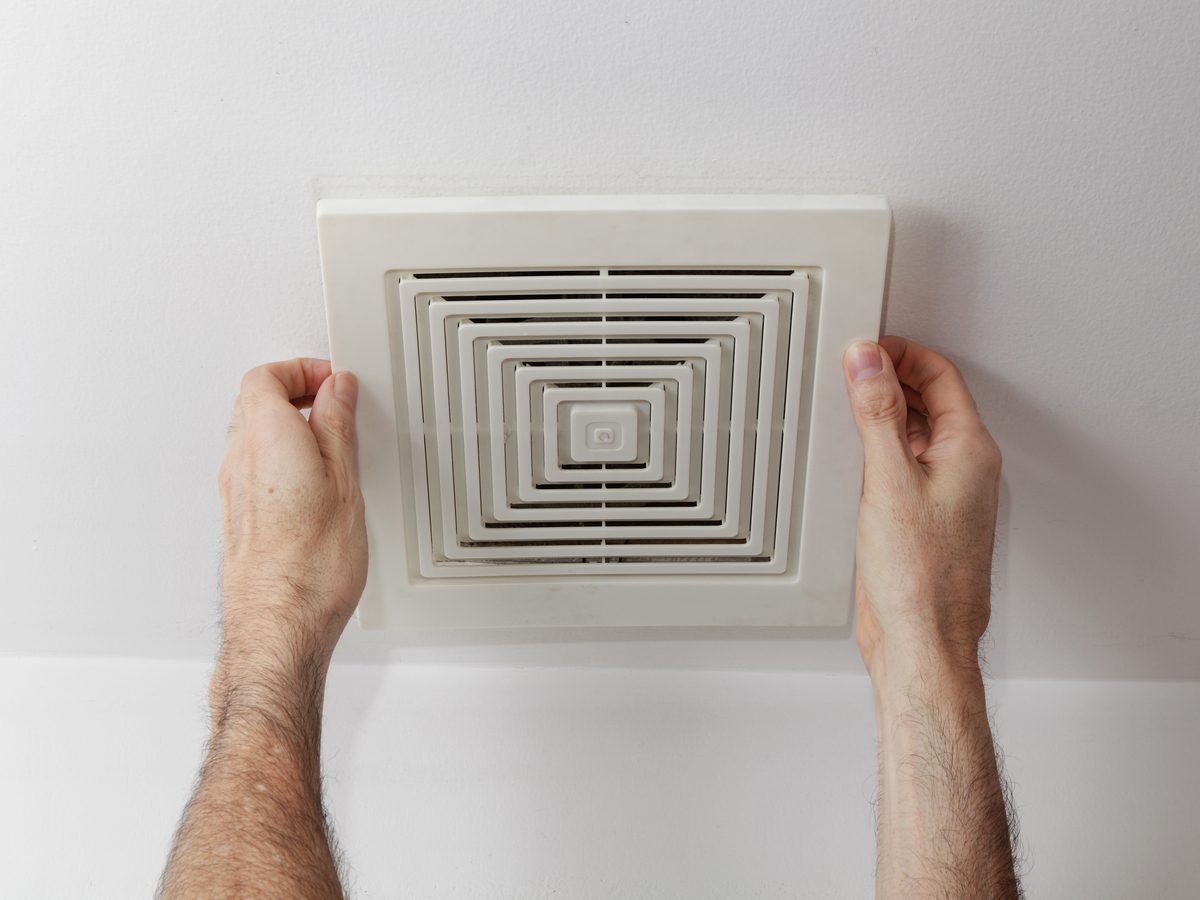
Turn on the fan
Always run it for 20 minutes after a shower to draw out the damp, mildew-making air. U of T’s Brook suggests doing the tissue test—hold a tissue up to the fan to see if it sucks in and holds tight—to make sure it’s working efficiently. If it takes a long time for the steam on your mirror to clear after a shower, that’s also a sign of poor ventilation.
Find out why you need to check your bathroom fan before leaving on a vacation.
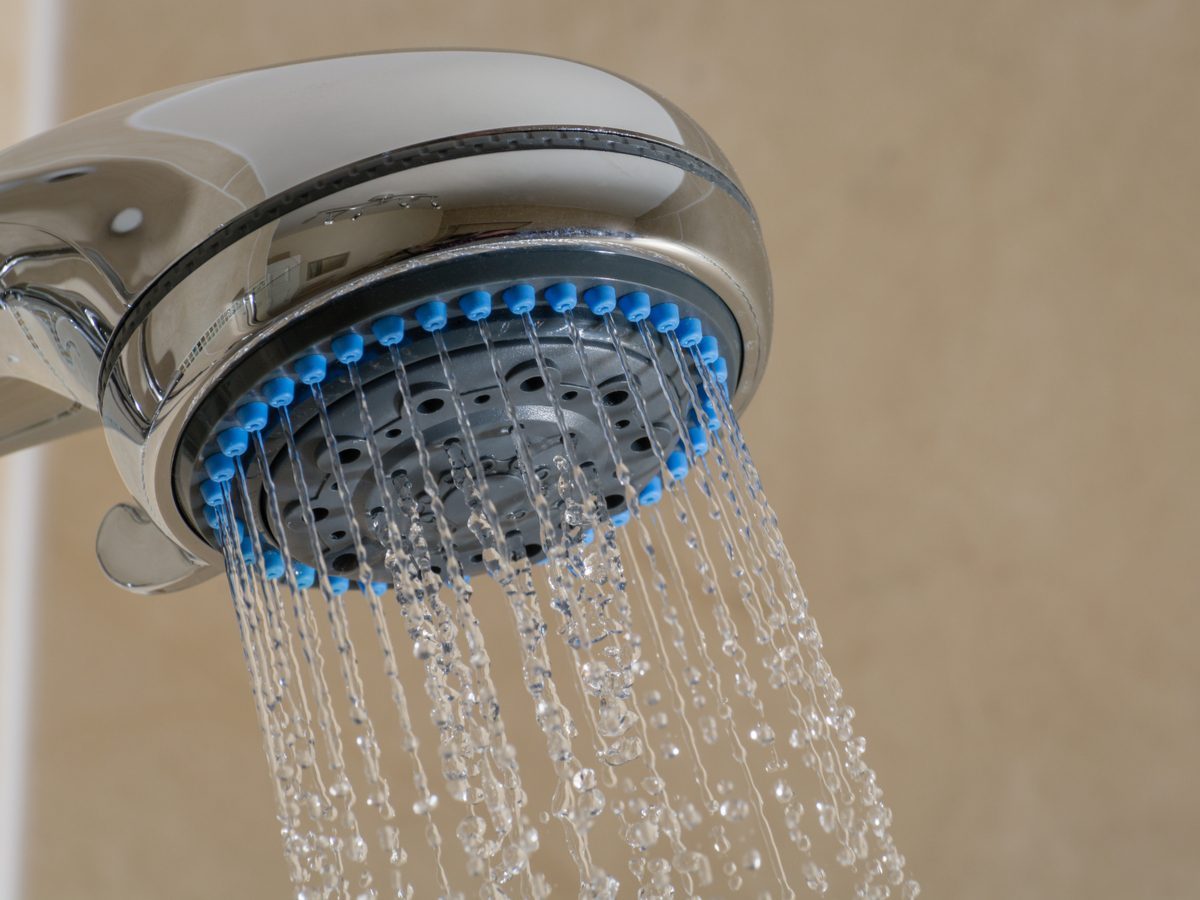
Avoid shower gunk
In sporadically used buildings like cottages, it’s important to hold a face cloth or hand towel over the shower head before you turn on the water to eliminate the initial blast of dangerous airborne bacteria (like legionella) that can build up in plumbing pipes. Dr. Nicholas Ashbolt, an environmental microbiologist at the University of Alberta, and a world authority on municipal water services and pathogens, also recommends unhooking the shower hose after use, so that stagnant water, where bacteria thrives, doesn’t collect inside.
Find out more bathroom mistakes you didn’t know you were making.
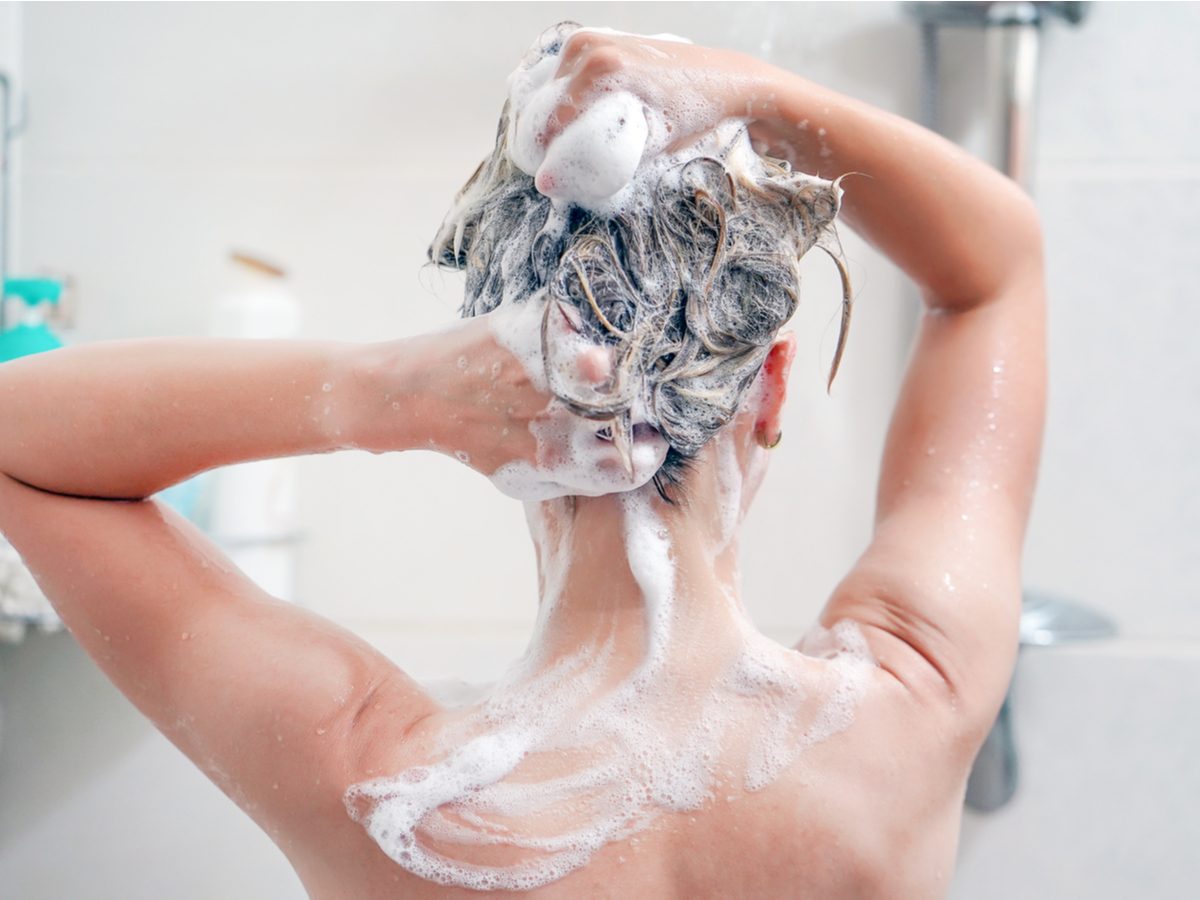
Cut back on personal care products
Don’t overuse hairspray, shampoo and deodorant. They’re throwing out major levels of VOCs—new research suggests as much as car emissions.
Here are seven potentially dangerous ingredients in beauty products no one is talking about.
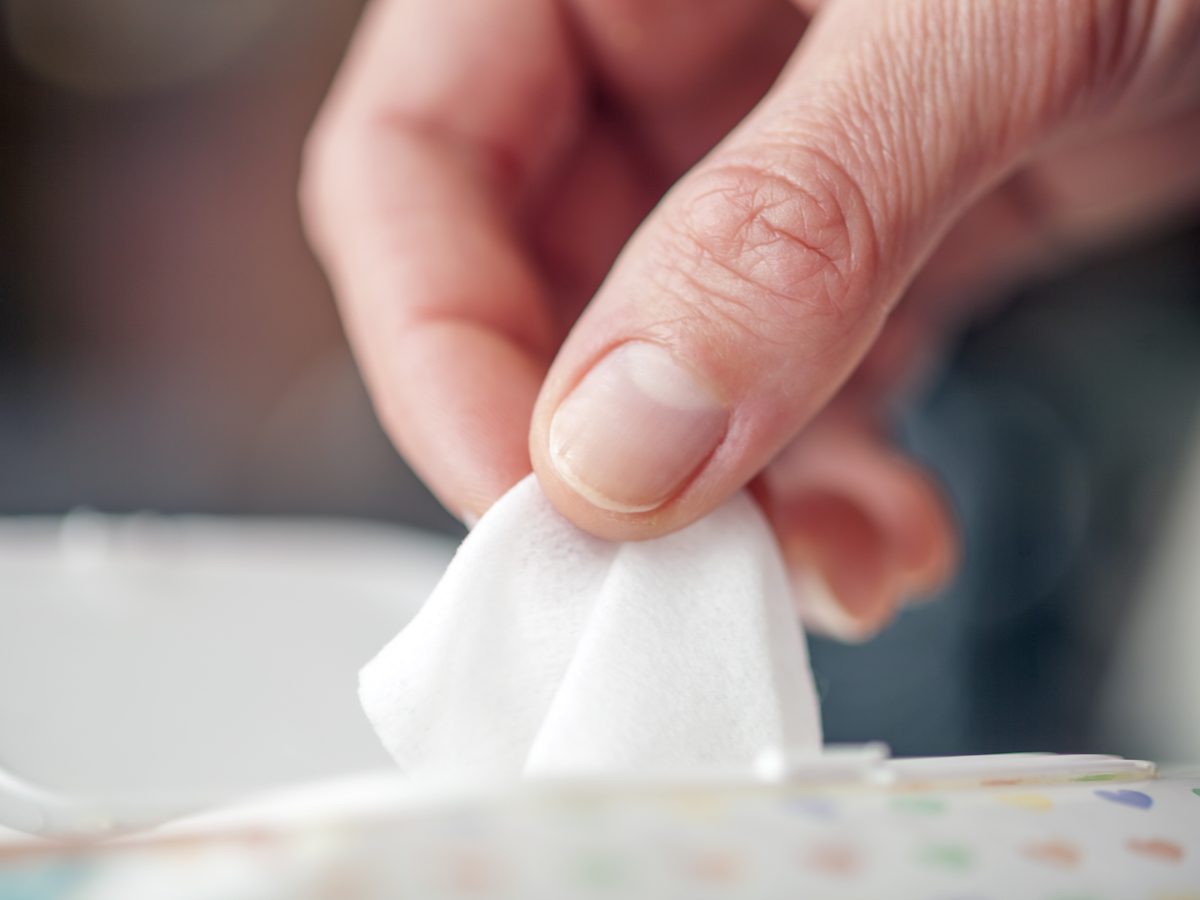
Don’t rush cleaning
The offending surface should be wet with the cleaning agent from disinfectant wipes for three to 10 minutes, depending on the brand, to properly kill the worrisome germs. To cut down on chemicals, choose wipes that use essential oils with antibacterial and anti-fungal properties as the active ingredients.
Psst—here’s how to clean your phone (and how often you should be doing it).
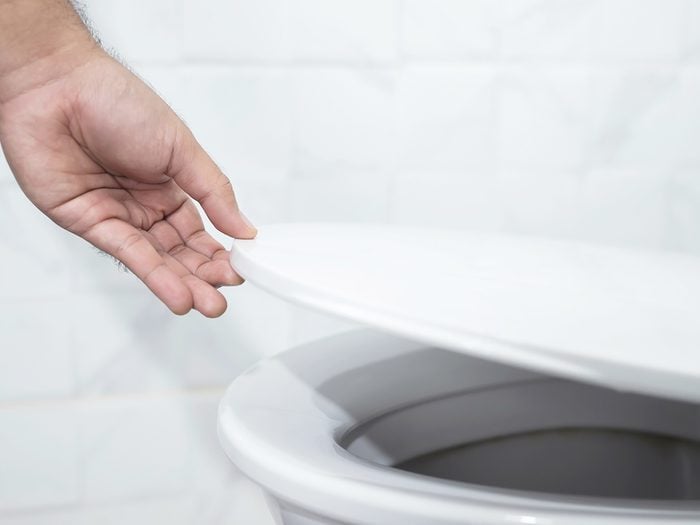
Close the toilet lid
It’s there for a reason! Toilet plume, the microscopic particles of whatever’s in the bowl, gets blown into the air and lands on everything within a two-metre radius—including toothbrushes. It’s not a day-to-day health threat, but the plume contributes to the transmission of nasty infectious diseases like norovirus.
Find out nine surprising things that are covered in fecal matter.
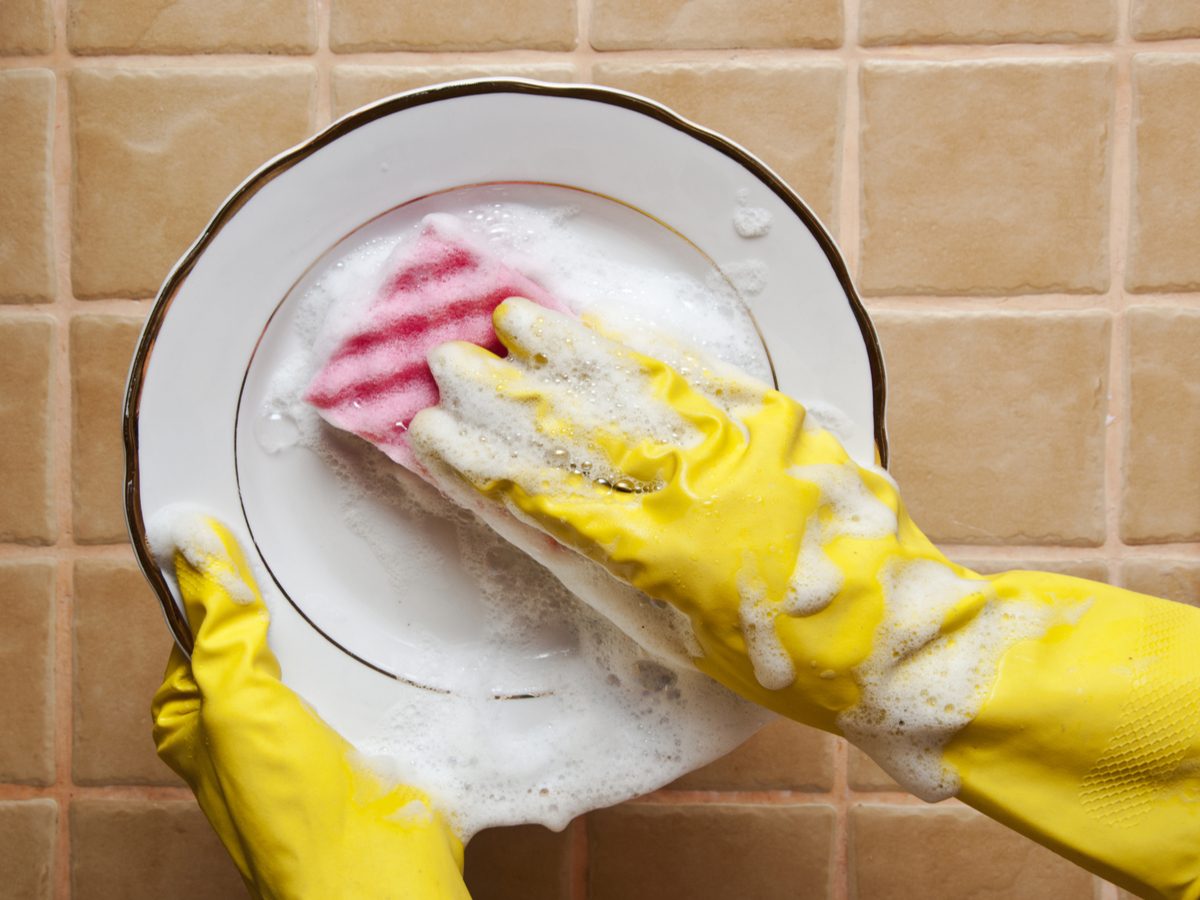
In the Kitchen
Toss sponges
Kitchen sponges retain water and food particles and are a cesspool of bacteria. One study found 362 different species living in the average kitchen sponge; 82 billion bacteria were living in just 16.4 cubic centimetres of space. Eep. Instead, use scrub brushes and thin, quick-drying cloths (most bacteria die during the drying process).
Find out the everyday items you’re not washing nearly enough.
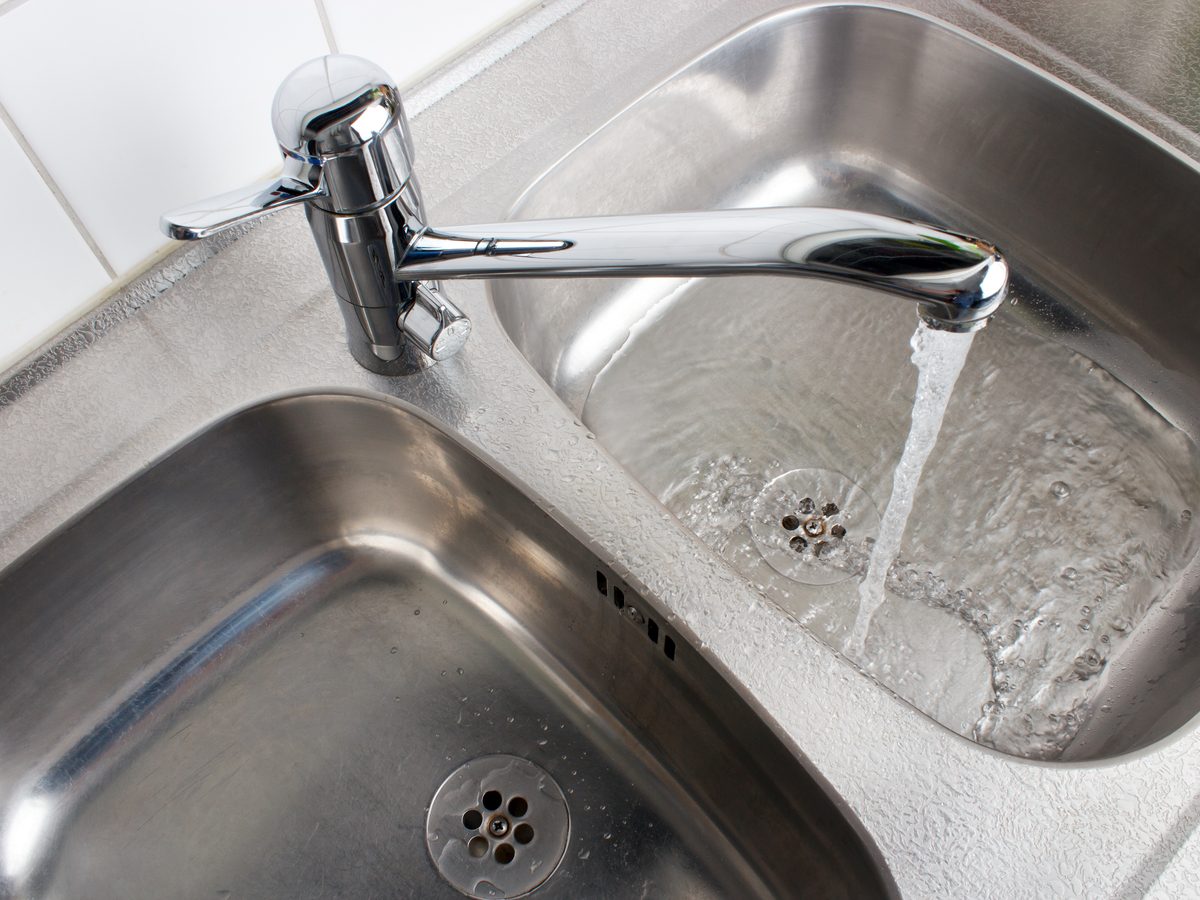
Clean your sink
Disinfect the sides and bottom once or twice a week—after kitchen sponges, the sink is the next germiest thing in the house.
Here’s how to clean absolutely everything in your kitchen, according to Charles the Butler of CTV’s The Marilyn Denis Show.
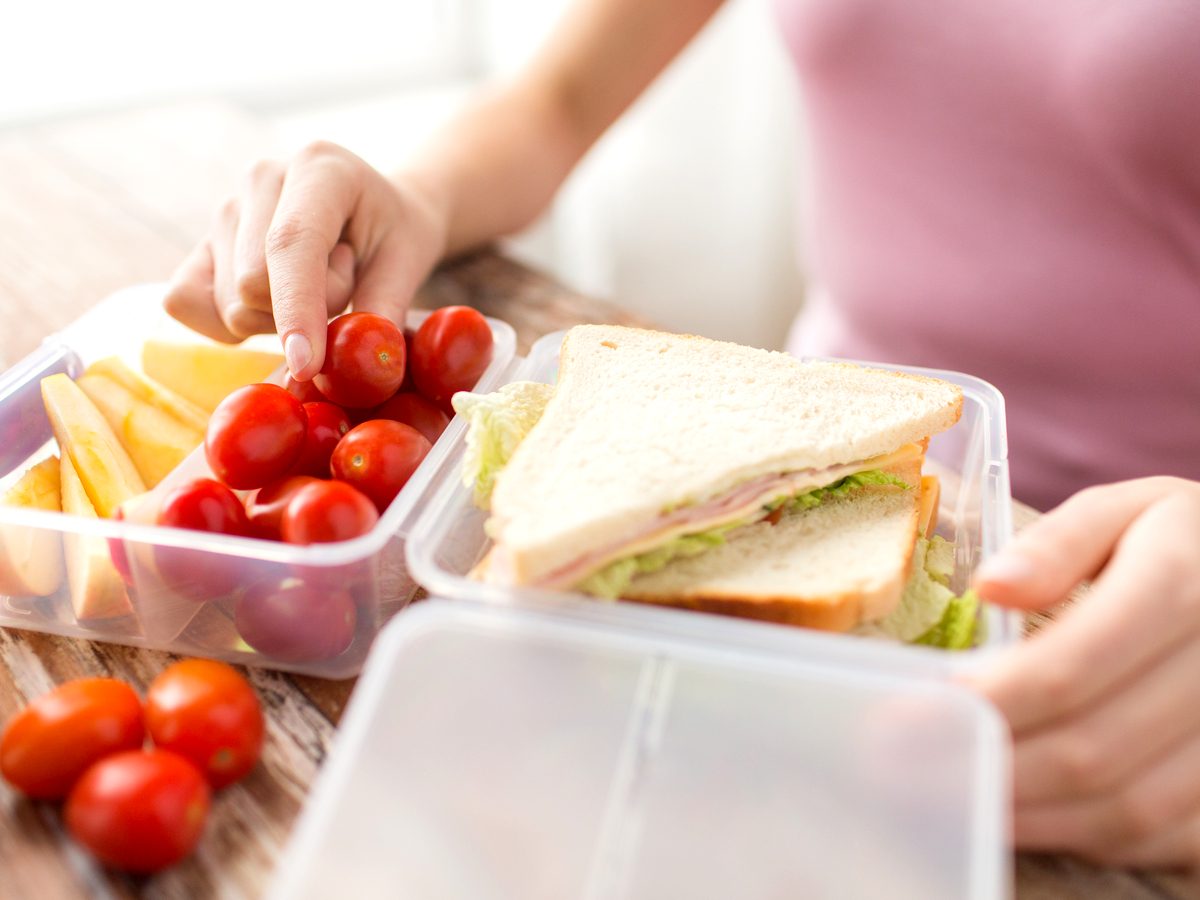
Know your plastics
Use glass containers instead of plastics with number 3, 6 or 7 on the bottom. No. 3s, a.k.a. PVCs, release phthalates into food and drinks; No. 6s, a.k.a. polystyrene or Styrofoam, are difficult to recycle; and No.7s contain the baddy endocrine disruptor bisphenol A (BPA), which can have developmental, reproductive and neurological repercussions, especially in kids.
Don’t miss our guide to healthy grocery shopping.
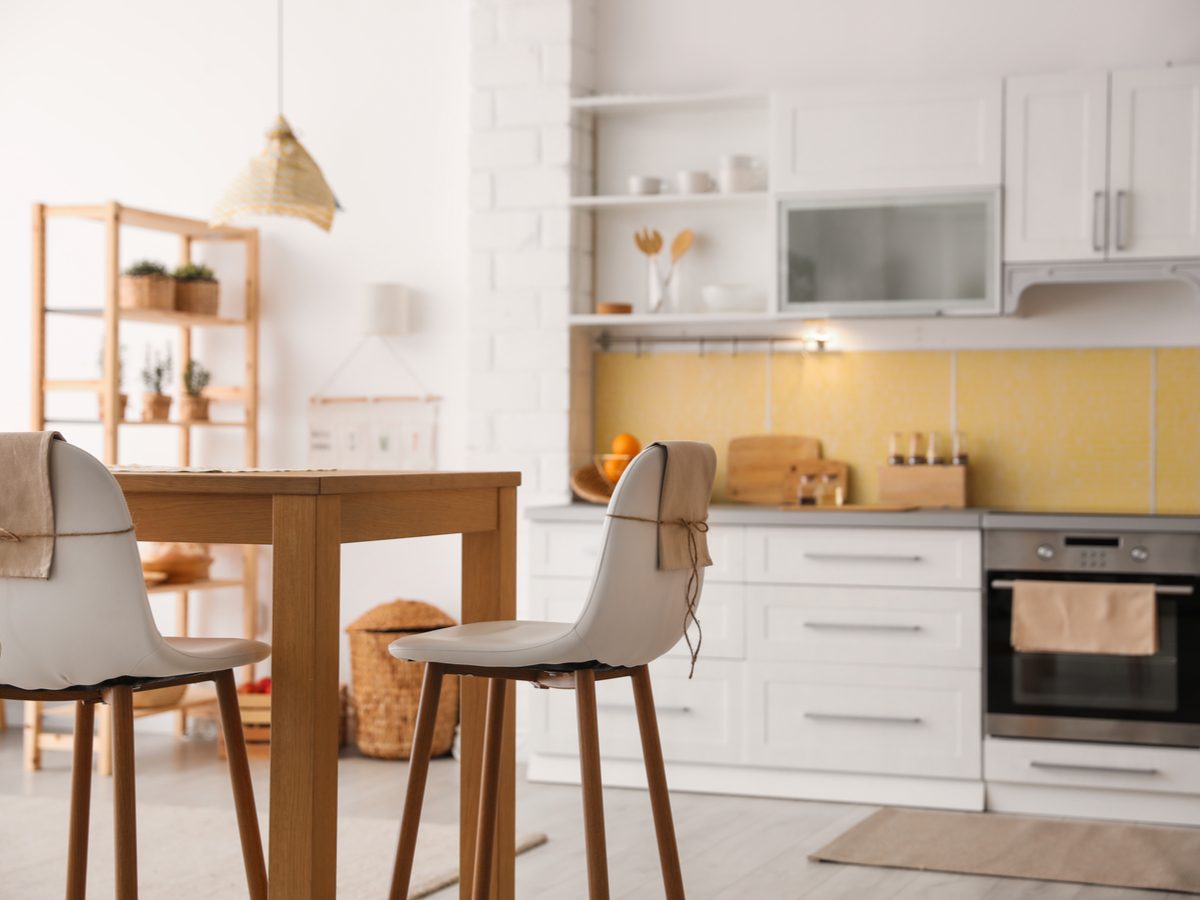
Choose light paint colour
Follow your gut when choosing paint colours, but avoid dark hues, which make a space appear smaller, which can feel cramped.
Here are 10 practical decorating tips from Brian Gluckstein, Canada’s most in-demand designer.

Let the sunshine in
Your brain—and your overall mood—benefits from sunlight-derived serotonin and melatonin.
Don’t miss HGTV star Bryan Baeumler’s best kitchen reno advice.
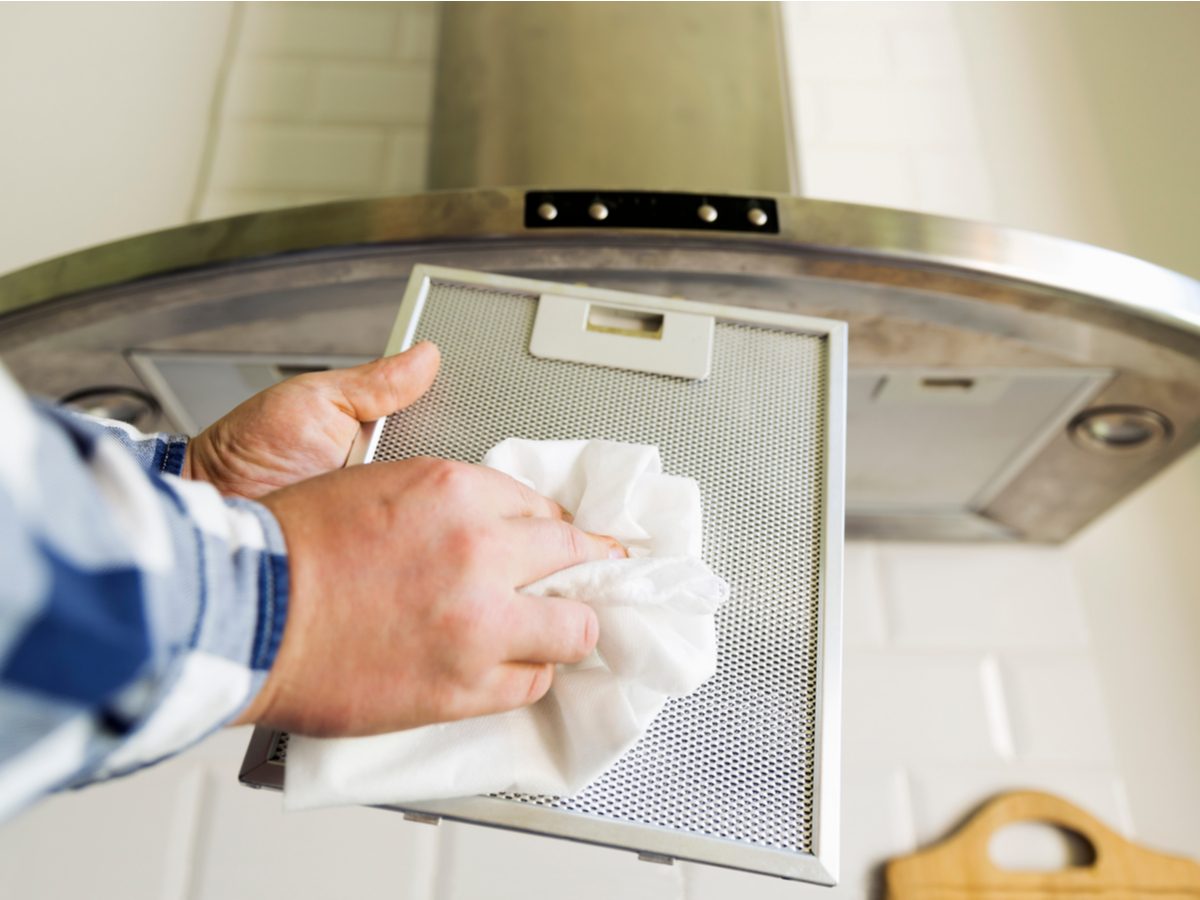
Crank your exhaust fan
Firing up the stove or oven with no ventilation is like taking in lungfuls of Beijing rush hour air. “We tend to only throw on the fan when we burn something, but any kind of heat sends particles into the air,” says U of T’s Brook. “We like to buy sleek appliances and countertops, but for a healthy home, the best thing to spend money on is a quality vent over the cooktop, one that runs quietly and effectively.”
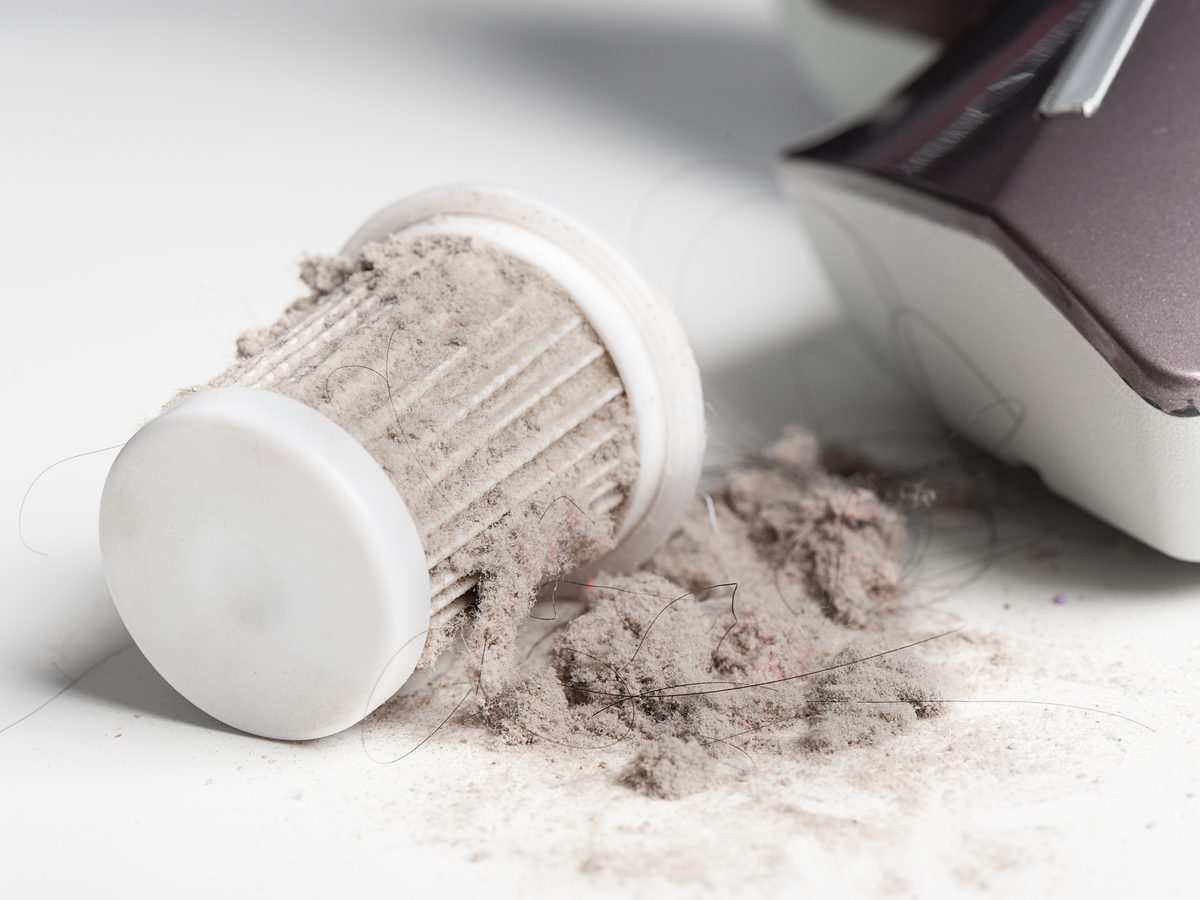
Use HEPA filters
Vacuums, air purifiers and heating, ventilating and air conditioning systems should all use High Efficiency Particle Air (HEPA) filters, otherwise they simply recirculate many small particles back into the air of your home. HEPA filters trap air contaminants in a complex web of fibres, so contaminants are removed on a microscopic level. This is important for cleaning, but even more crucial for asthma and allergy sufferers.
Find out the cleaning mistakes you didn’t know you were making.
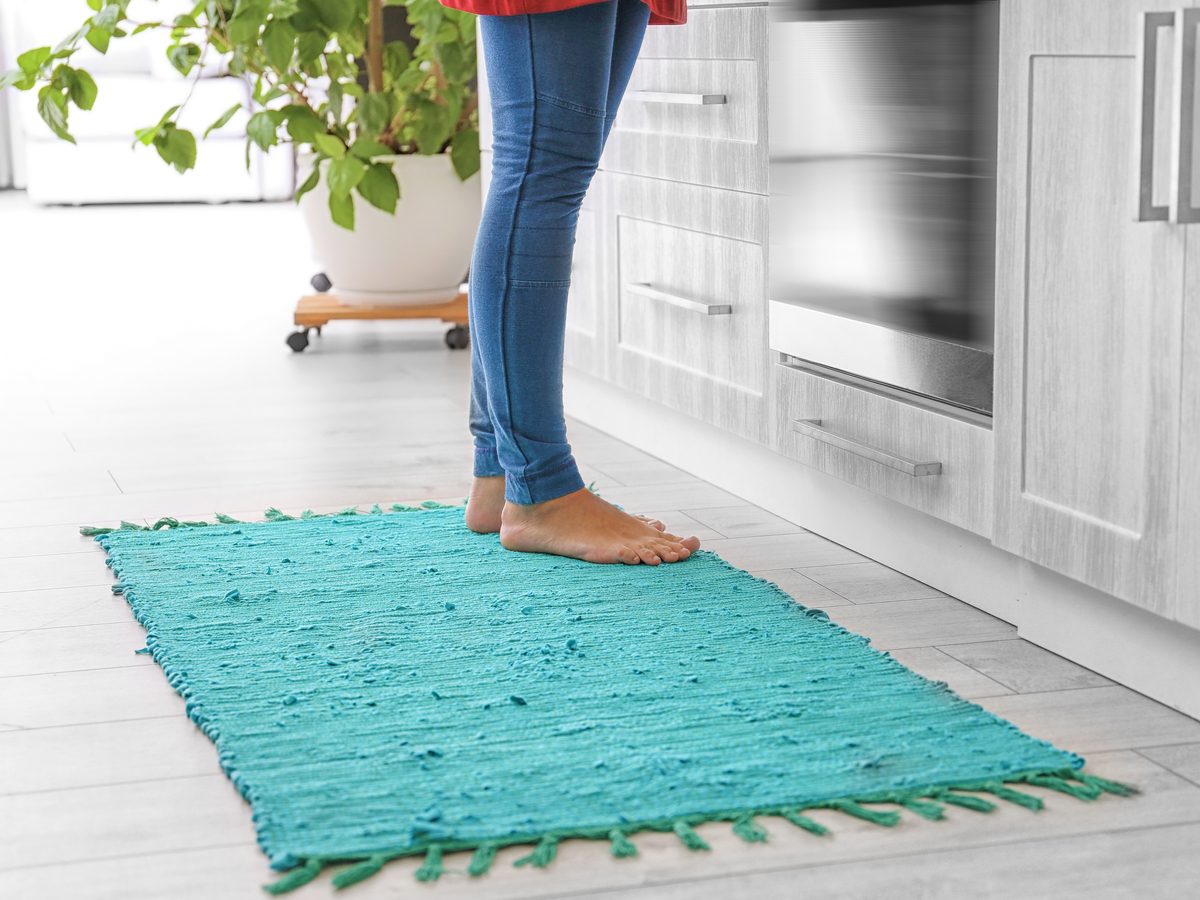
Stop grime in its tracks
Up to 80 per cent of the dirt that gets tracked inside—along with countless allergens, bacteria and chemicals—can be caught by washable mats.

Eat meals together
Shared meals improve our eating habits, according to recent studies. Adolescents and young adults reap the most benefits, eating more fruits and veggies and consuming fewer fast food and takeout items. Communal eating also increases social bonding and feelings of well-being, and enhances your sense of contentedness.
Follow these 40 daily habits for a happier life.
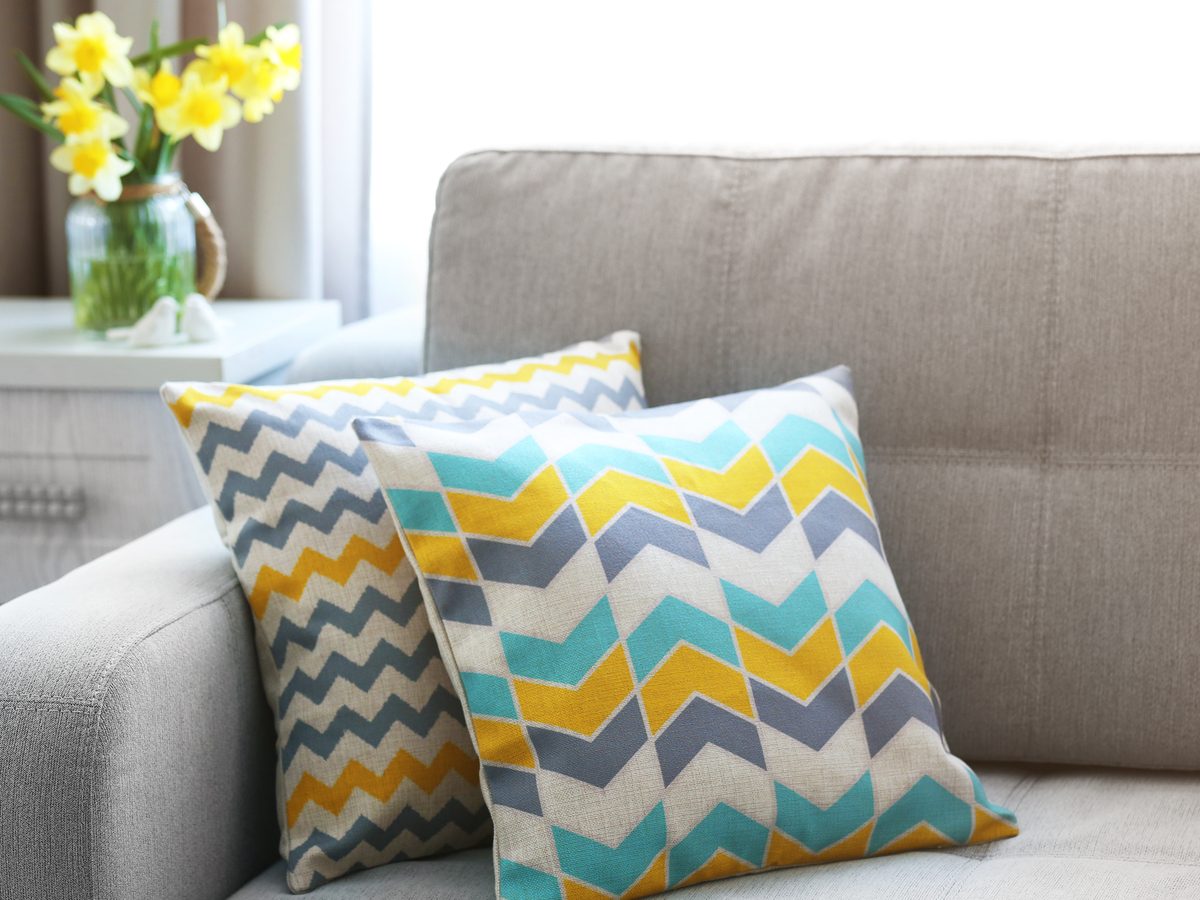
In the Living Room
Bust dust
Swap out your soft fabrics (curtains, cushion covers, throws) for machine-washable options to help keep dust and allergens under control. (These brilliant laundry hacks can help.) VOCs adhere to dust particles, readily absorbed when we breathe in.
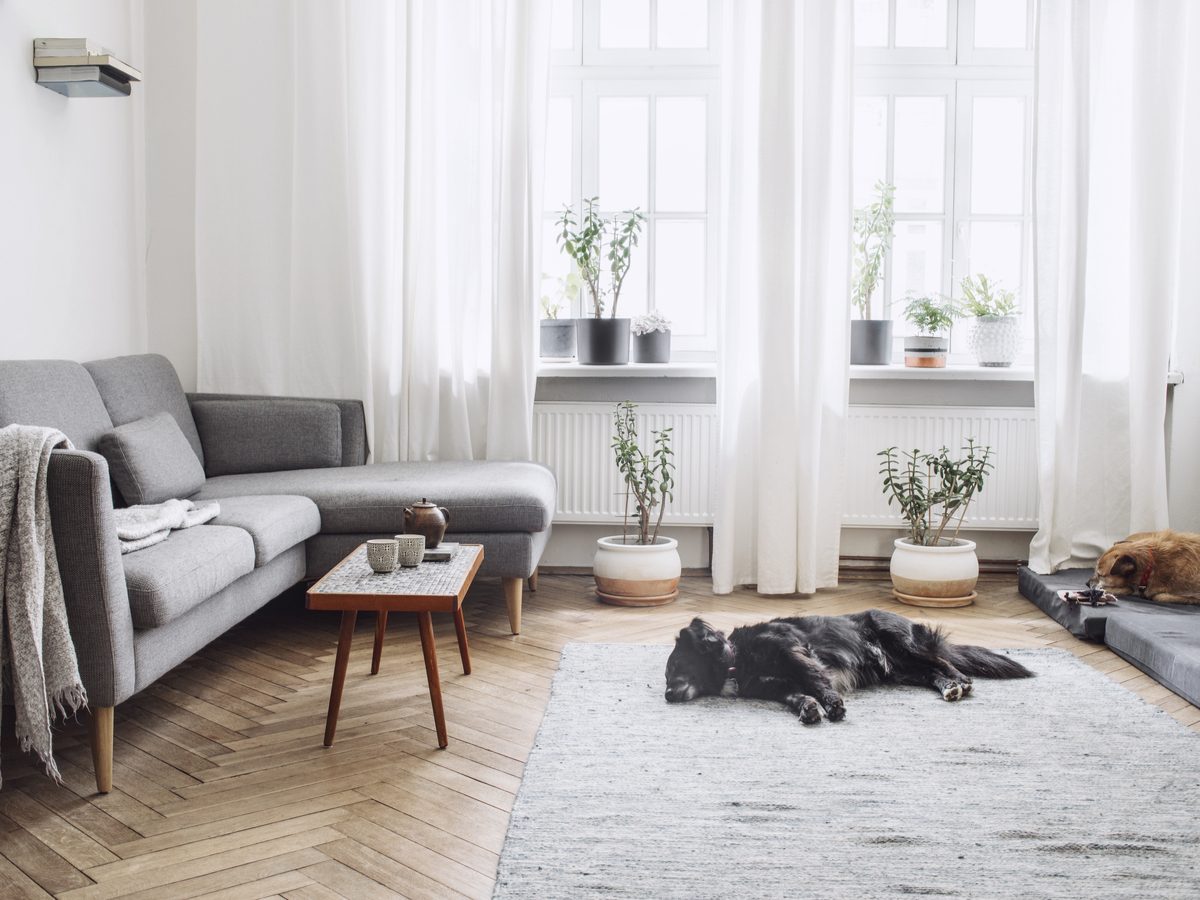
Clean your carpets
Spring is the time to do a serious “soft surface” clean, says YouTube star and Canadian “cleanfluencer” Melissa Maker. She’s right: stale indoor air and heating systems increase the amount of allergy-inducing dust mites, pet dander and mould spores circulating through your house.
This spring cleaning spot checklist will come in handy.
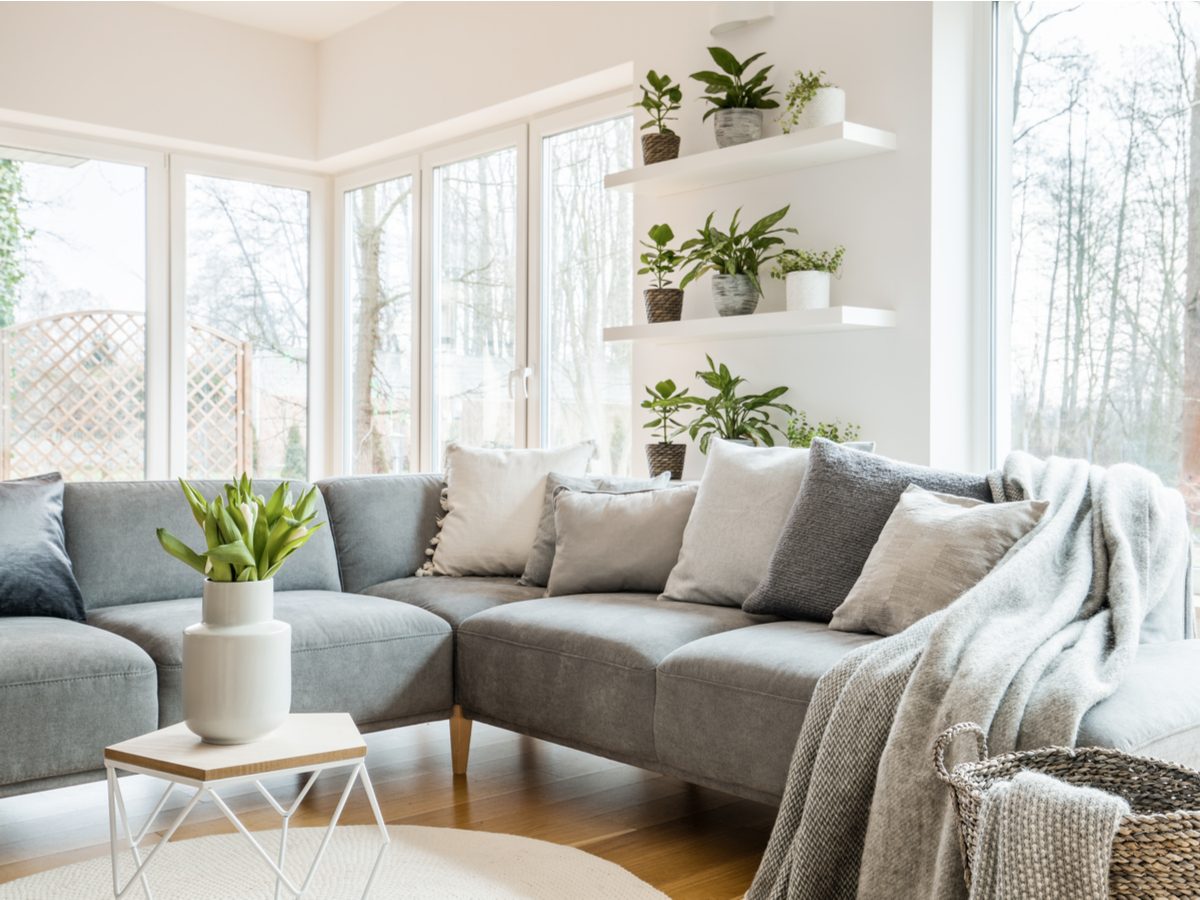
Add a few house plants
Interaction with indoor plants can reduce physiological and psychological stress—studies show that transplanting, watering and digging in the dirt lowers blood pressure and suppresses sympathetic nervous system activity (our fight-or-flight response). Unfortunately, the theory that they’ll improve the air quality in your home is bunk. You’d need a jungle’s worth of plants to do that.
Got a brown thumb? Here are 10 hardy indoor plants you (probably!) can’t kill.

Decontaminate your remote
Before you do anything else, run a disinfectant wipe over your mobile phone and another over the TV remote, so as not to spread germs from one surface to another. Keep the alcohol swabs on hand to make it an ongoing habit. Mobile phones go everywhere with us and are filthy with pathogens (salmonella, E. coli and the like).
Check out 40 spring cleaning tips you’ll wish you’d known sooner.
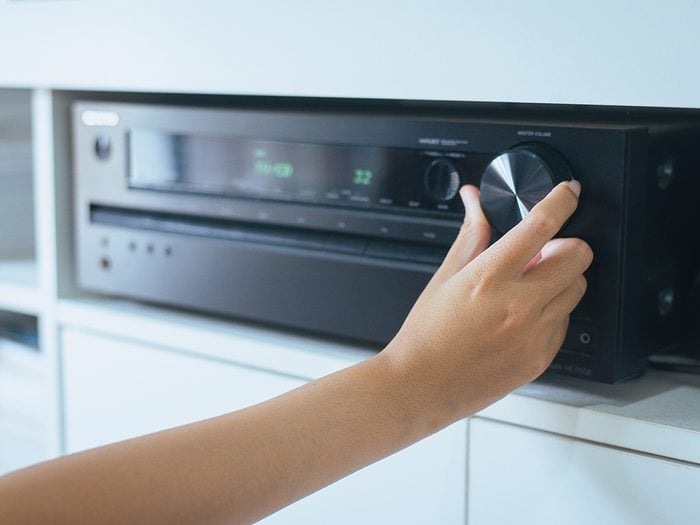
Turn it down-down-down
There’s sufficient evidence that noise exposure increases the risk of hearing impairment, hypertension and heart disease, not to mention sleep disturbance and just general annoyance. So keep the stereo turned low and schedule quiet time to give yourself a chance to recover. A big-picture tip: install energy-efficient appliances, as they tend to run quieter.
Learn to spot the silent signs of hearing loss.
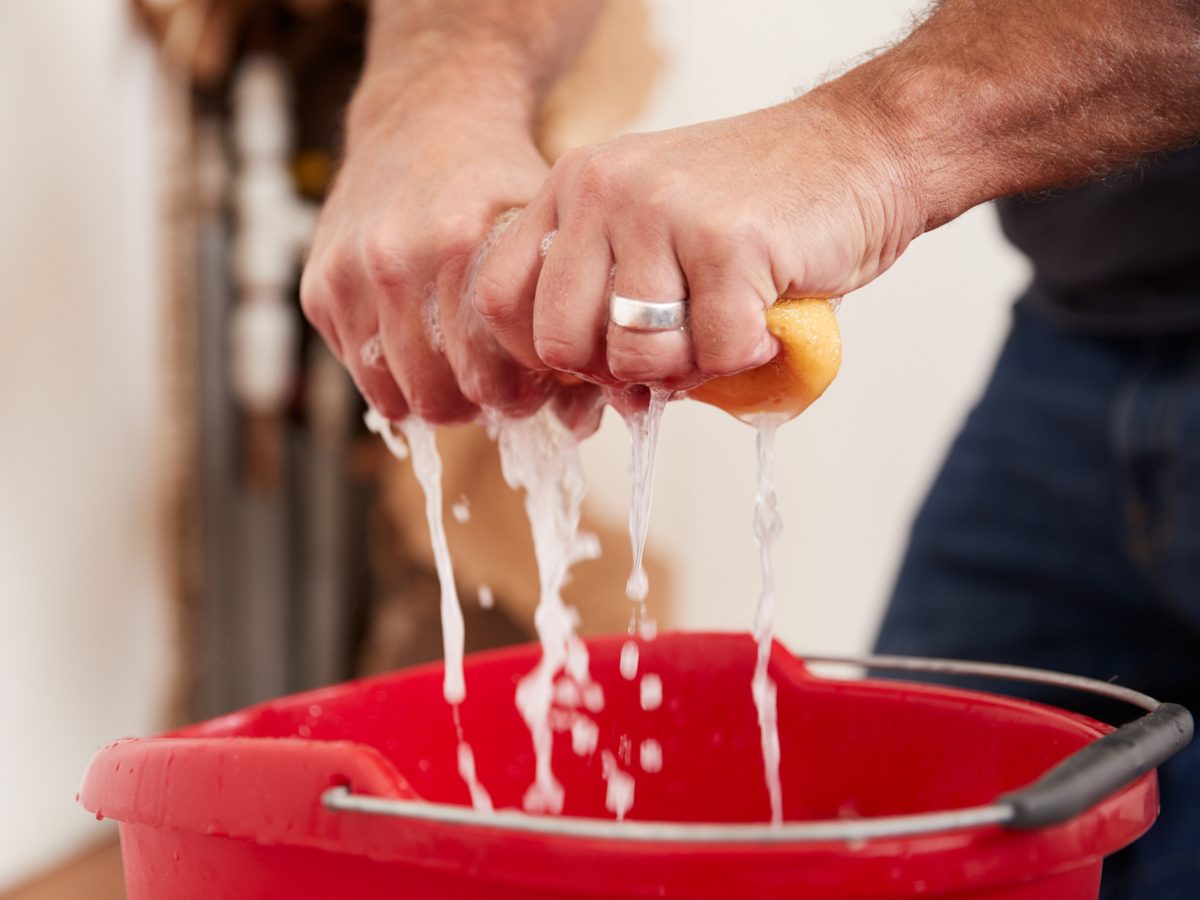
Make your own cleaners
Clean your hardwood floors with vinegar and water or lemon oil and water. Chemical-based cleaners are high in VOCs, which are lung irritants. And most “green” cleaners aren’t much better, because claims like “natural” aren’t regulated. Check the Environmental Working Group’s guide to cleaners to see how brands rate.
(Keep in mind, there are certain surfaces you should never clean with vinegar.)
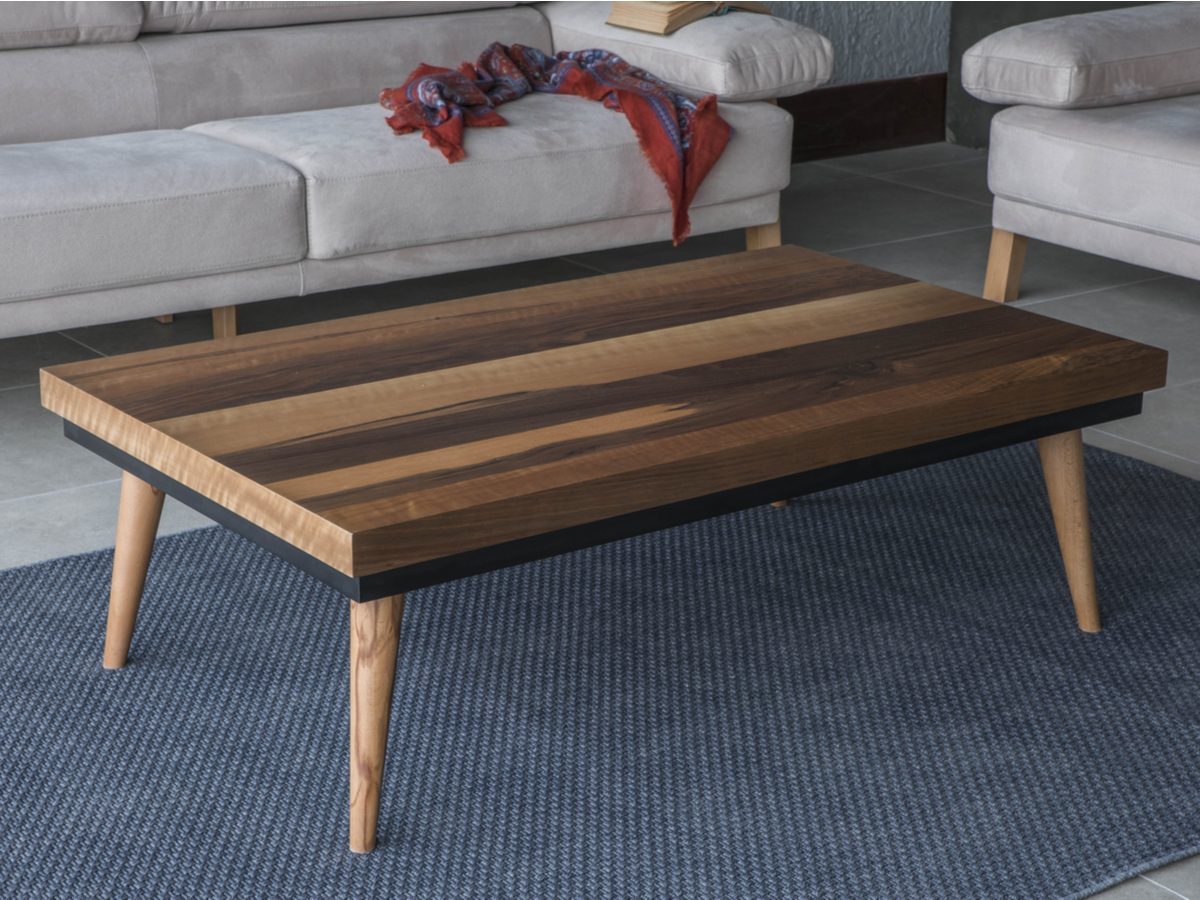
Know your wood
Look for low- or formaldehyde-free composite wood products the next time you purchase a new piece of furniture or upgrade kitchen cabinets. The Canadian government has recently established regulations to standardize an acceptable level of formaldehyde, which causes eye, nose and throat irritation, as well as respiratory symptoms and, at high-enough levels, cancer.
Here are 30 cancer symptoms you should never ignore.

Crack a window
Indoor air contains two to five times more chemical pollutants than the air from outside. Glue used to adhere furniture, chemicals found in leather treatments, and wood lacquers, paints and flame retardants that are in everything from electronics to textiles to polyurethane foam products all combine for a toxic concoction.
After you’ve tackled this healthy home checklist, find out 13 cleaning hacks that take the hassle out of housekeeping.